Introduction
The primary local and regional threats to Israel remain a resurgent Hezbollah, a nuclear-capable Iran and an unstable Syria. In the face of these threats, the Israel Defence Forces are considered among the best trained and equipped in the region, not least thanks to massive support from the United States.
In 2019, Israel ranked 17 out of 137 countries included in the annual GFP review. That year, the number of people who reached military age was estimated at 121,113 personnel, while military expenditure was estimated at $19.6 billion. In 2018, military expenditure accounted for 4.3 per cent of GDP, compared with 4.4 per cent in 2017 and 4.6 per cent in 2016, according to the Stockholm International Peace Research Institute.
The army has always received the lion’s share of Israel’s annual budget. In 2016, the Knesset (parliament) approved a defence budget for 2017 and 2018 of $36.4 billion, or 5.8 per cent of the budget. According to the World Bank, Israel’s military expenditure as a percentage of gross domestic product (GDP) was 5.3 in 2015. This was slightly lower than the estimated 6.2 per cent of GDP spent on defence in 2012.
| Index | Number | Rank out of 137 |
| Total military personnel | 615,000 | - |
| Active personnel | 170,000 | - |
| Reserve personnel | 445,000 | - |
| Total aircraft strength | 595 | 18 |
| Fighter aircraft | 253 | 11 |
| Attack aircraft | 253 | 13 |
| Transport aircraft | 18 | 38 |
| Total helicopter strength | 146 | 32 |
| Flight trainers | 153 | 20 |
| Combat tanks | 2,760 | 8 |
| Armoured fighting vehicles | 6,541 | 10 |
| Rocket projectors | 150 | 25 |
| Total naval assets | 65 | - |
Israel’s military strength in 2019. Source: GFP review.
According to the Israeli Ministry of Finance, in 2012 the Israeli defence budget was 50.6 billion NIS or 14 billion USD, on a total national budget of 365.9 billion NIS (101.8 billion USD). According to the Stockholm International Peace Research Institute, in 2012 the Israeli military expenditure amounted to an estimated 56.5 billion NIS or 6.2 percent of its Gross Domestic Product (GDP) (for comparison: Jordan spent 4.6 percent of its GPD on military expenditure, Egypt 1.7 percent). According to the World Bank, military expenditure amounted to 14.6 percent of central government expenditure in 2015, a decrease when compared to 2010, when 16.2 percent of government expenditure was spent on the military.
- Active military personnel
187,000 (2011), including 135,500 conscripts – under general mobilization the armed forces swell to more than 600,000 men and women - Army
141,000 (including 113,000 conscripts) - Navy
9,500 (including 3000 conscripts) - Air Force
27,000 (including 18,000 conscripts)
Hardware
- MBT
Some indigenously developed 3000 Merkava (different versions) and American M-60’s. APC + AIFV: 5,500 American, Israeli-developed and modified captured Soviet T-54/55. - Surface combat ships
Thirteen Sa’ar 5 and 4,4 corvettes, six patrolboats
- Combat aircraft
Some 360 F-15 and F-16 (different versions)
- Strategic Forces
It is commonly assumed that Israel is a nuclear power with some two hundred warheads. Presumably, these are distributed over a triad of delivery systems: missiles, aircraft and nuclear tipped cruise missiles aboard submarines.
- Missiles
150 Jericho II and III based in silos on the Palmachim airbase
- Aircraft
According to the American think tank CSIS 76 F-15s, 232 F-16s, 20 F-4Es, and 50 Phantom 2000 fighter-bombers are capable of long-range refueling and of carrying nuclear weapons.
- Submarines
Five Dolphin class and two Gal class. The Dolphin-class boats differ from the German Type-212 in one important aspect, namely that four torpedo tubes have been enlarged. According to the Israeli explanation this is to accommodate combat swimmers. Conventional wisdom has it that this is for launching nuclear tipped Turbo Popeye cruise missiles from American lineage.
Army
The Israeli Defence Forces (IDF) rely heavily on conscripts. Most Israeli citizens have to serve in the IDF for a period of between two and three years. The compulsory military service does not apply to Israeli Arab citizens. Military service is compulsory for both males and females; in this Israel is probably unique in the world. All eligible men and women are drafted at the age of 18. Men serve between 2 years and 8 months to three years, while women serve for 2 years.
The highly mechanized Israeli land forces especially rely on conscripts. In the case of a threatening attack by armoured formations belonging to Arab neighbouring countries, conscripts would be called to mobilization centres and move to their defensive positions for counter-attacks. After the end of the 1973 October War, the chances of launching this type of attack gradually diminished until the region entered a state of ‘no war and no peace’. While maintaining the large armoured formations, Israeli land forces have invested in counter-insurgency, asymmetric warfare, hybrid warfare and other new types of conflict, as have its air force and navy.
In 2007, a year after the Israeli Armed Forces and their commanders had made less of an impression during operations against Hezbollah in South Lebanon (see the Israeli-Hezbollah War), the Israeli military presented an armed forces wide procurement plan called Tefen. This five-year plan mirrors the ambition to cope with an future armed conflict, be it tank battles in Syria, long-range operations in Iran or going after rocket firing teams in Lebanon or in the Gaza Strip.
The land forces will be substantially bolstered by Tefen, proportionally more so than the navy and the air force. One, perhaps two extra reservist divisions will be formed, and hundreds of the latest armoured personnel carriers, called Namer, and a new version of the Merkava tank (Mk-IV) will replace older equipment. Also, American Stryker armoured vehicles will be bought.
Hybrid warfare
Since Russia annexed Crimea through its cunning use of special forces—the “little green men” who were first said to be local defence forces, but then officially admitted to have been Russian commandos—the phrase “hybrid warfare” seems usually to refer to the intervention in Ukraine by its large eastern neighbour, but the phrase has been coined before, especially to describe the asymmetrical conflicts between Israel and its adversories Hezbollah in Lebanon and Hamas in the Gaza Strip.
The essence of hybrid warfare is irregular forces or “non-state actors” comprising a guerrilla or insurgent force equipped with the latest ordnance, such as guided anti-tank-missiles— the best ordnance money can buy—or allies can provide.
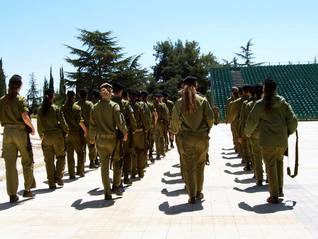
The 2014 tit-for-tat war, Operation Strong Cliff (or Protective Edge), over rocket strikes by Hamas fighters and Israeli attacks—who started this latest round of hostilities remains a matter of discussion—proved that this type of warfare is still in dynamic development. With nearly seventy fatal casualties suffered by the Israeli Defence Forces, a significant loss of life, it has become clear that no clear answer has been found to the “hybrid” challenge and that airpower has its limits in urban warfare.
The Gaza conflict brought ancient tunnel warfare to a new level. Tunnels for smuggling food and goods such as building materials and other contraband had been in use for decades, especially those dug under the Gaza-Egypt border. Some were equipped with ventilation systems, concrete slabs and modern lighting. But this 50-day conflict saw the first large-scale exploitation of attack tunnels for the specific military purpose of kidnapping soldiers or carrying out raids behind the frontline or border. YouTube videos suggest that Hamas fighters were successful in attacking a concrete border post, killing several soldiers and taking their weapons.
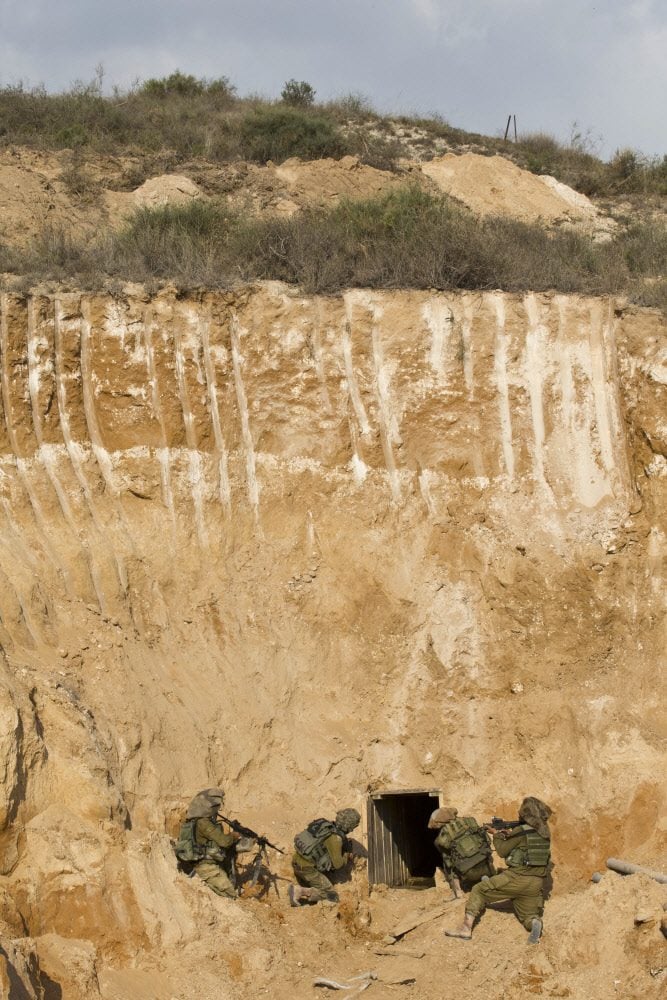
The Israeli Defence Forces seem not to have used an innovative approach in Operation Strong Cliff but to have followed the same doctrine as it used during Operation Cast Lead in 2008 and Operation Pillars of Defence in 2012, both against Gaza. This “Dahiya doctrine” stems from the war against Hezbollah in 2006, which was basically a conventional version of the Cold War nuclear doctrine of massive retaliation.
This doctrine was named for the Shiite-dominated neighbourhood in southern Beirut that was turned into rubble by sustained air attacks by Israeli jets, after having warned the population with leaflets. In 2014 Israeli aircraft also flattened built-up areas near Rafah.
The “Hannibal directive” seemed to be in force with Strong Cliff, although it is only alleged, having been mentioned in the Israeli press but never officially acknowledged. The directive presumably aims to prevent kidnappers from getting away with their hostages, even if that means killing the hostages and bystanders along with the kidnappers.
The conception of the Hannibal directive is believed to have been triggered by the abduction in 2006 of the Israeli sergeant Gilad Shalit, who remained in captivity for five years. He was released in exchange for more than one thousand Palestinian prisoners.
It has been speculated that an Israeli soldier was killed in Gaza by Israeli gunfire to prevent kidnappers escaping the scene of the abduction, just as dictated by the Hannibal directive.
Navy
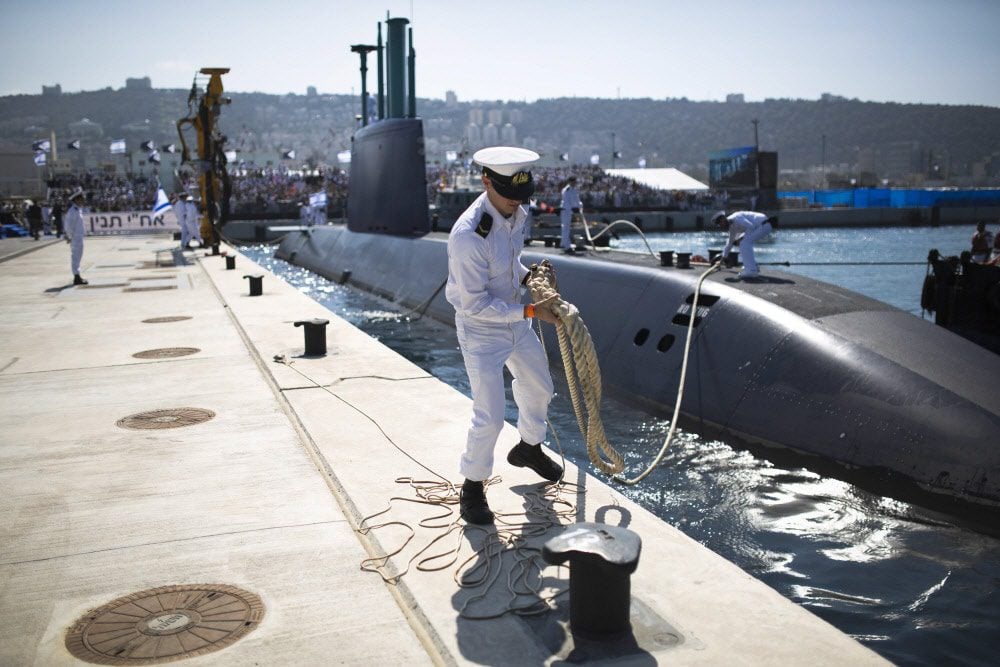
The military significance of Israel’s Navy has gradually increased during the last decades. Formerly a coastal defence force with few capital assets, nowadays the Israeli navy patrols with NATO task forces in the Mediterranean and even dispatches submarines to the Indian Ocean. With its supposedly nuclear capable submarines, it even forms an integral part of the nuclear deterrence. With the increase of its strategic importance, funding has increased accordingly.
Tefen gives the navy leeway to buy two multipurpose ships, presumably two MEKO frigates from Germany, which also sold two additional Dolphin-type submarines, bringing the total to five. The earlier submarines have not been discarded but have instead been refurbished, probably for deployment of special forces in a low threat environment and for training purposes.
Submarines
In recent years an ambitious plan to enhance Israel’s naval capabilities has come to light. This has directly to do with two strategic drivers, the first of which is probably to boost Israel’s secondary strike capability and the second to protect oil- and gas-exploration and exploitation in the Mediterranean.
In 2012 the MoD received the first of three German submarines of the Dolphin II class, in addition to the three that have been in service since the nineties. The new boats feature some major technical improvements over the earlier Dolphin I class. With a displacement of 2400 tons submerged versus the 1700 tons of the first Dolphins, they are significantly larger and have a much longer range than the latter. Also, the Dolphin II submarines are equipped with the latest air-independent propulsion (AIP) technology, which allows the boats to stay submerged much longer than vessels without AIP modules.
Although it is never confirmed officially, the subs are widely seen as the third pillar of the Israeli nuclear triad, the first being air-launched bombs and missiles and the second intermediate-range ballistic missiles, such as Jericho. One sign of this is the installation of two sizes of torpedo tubes, one with a normal function, the other, a wider one, supposedly for use by frogmen, although these are allegedly suited also for the launch of Turbo Popeye nuclear-headed cruise missiles.
The second driver became apparent when the MoD approved the allocation of $800 million to acquire four new surface vessels needed to protect Israel’s growing offshore economic activities, especially those associated with the discovery of large gas fields in the eastern Mediterranean. The four vessels, for which a tender has been issued, would give the Israeli navy the capability to protect gas rigs and other maritime infrastructure with a continuous presence. Current inventory of corvettes is not large enough for such an assignment.
At the time of writing (December 2014) no decision has been made as to what vessels would be ordered, but, during the lengthy acquisition process, American, German, and South Korean builders have been mentioned, as have yards in Israel itself.
Air Force
The Israeli Air Force has an official list of present and future missions. However, the long-range strike mission especially caught the global public spotlight. In September 2007, Israeli aircraft penetrated Syrian airspace and bombed an as of yet enigmatic target which was described by Israel as a nearly functional nuclear reactor, built with North Korean support. How the strike force was able to evade or blind the Syrian air defences, which are held in higher regard than, for example, those of Iran, still remains a puzzle to military observers.
One potential long-range attack on strategic targets often makes the headlines: a strike on Iranian nuclear facilities where, according to some intelligence reports, the country is developing a nuclear arsenal. Beyond the political pros and cons, analysts deem such a strike possible from a military point of view. With two dozen F-15Is and more than a hundred F-16Is the Israeli air force has the reach and the know-how to bomb the alleged facilities without encountering too much opposition from the Iranian air defence and interceptor aircraft.
The Tefen Plan plans to modernize the air force with several squadrons of Lockheed-Martin F-35 Lightning II fighter-bombers, formerly known as the Joint Strike Fighter (JSF).
Missile Defence
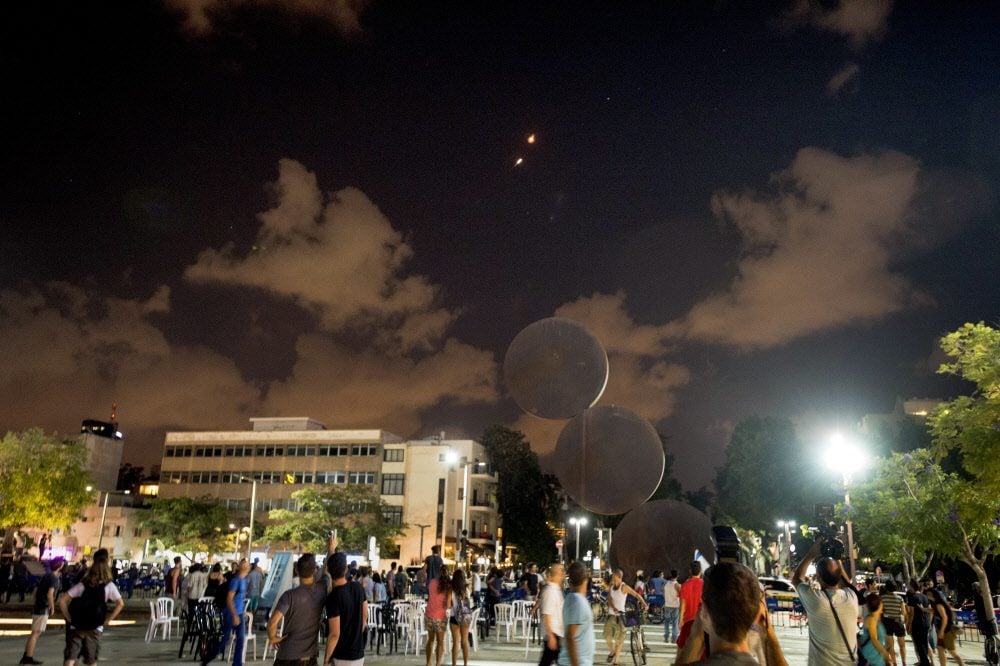
The threat of unopposed missile attacks has figured prominently in Israeli military thinking for decades. In October 1967, during the War of Attrition that followed the June War in that same year, two Egyptian Komar missile boats sank the Israeli destroyer Eliat. During the October War of 1973, Egyptian Tupolev bombers succeeded in launching several heavy air-to-surface missiles, that failed to hit their targets (see also for more in depth information, the October War of 1973 in Arab-Israeli Wars).
The missile threat really materialized in 1991 during the Gulf War, when dozens of Iraqi Scud missiles hit Israeli territory. Although the Scuds were very inaccurate, civil defence measures such as sealed rooms against potential gas attacks caused a lot of anxiety. Television footage of Patriot air defence missiles launched in pairs and Scud debris raining down, suggested that the Patriots were an adequate answer.
But analysis after the Gulf War brought to light that the Patriots had only succeeded in hitting larger parts of the descending debris caused by the breaking up of the Scud missile while entering the atmosphere and had missed the warhead altogether. This underlined the vulnerability to Scud type missiles. The proliferation of Scud missiles has since accelerated throughout the Middle East.To protect its territory against all types of missiles, from Iranian long-range Shahabs to the Qassams, Katyushas and Grads launched from the Occupied Territories but also Syria and Lebanon, several lines of missile defence are being erected.
Iron Dome, a system based on small, agile interceptor missiles is now being used against attacks of Qassams and even mortar rounds.Missiles with a range of 250 kilometres will be countered by a system called David’s Sling, comparable in technology to Iron Dome. David’s Sling is being co-developed with the American defence contractor Raytheon. Patriot PAC-3 missiles – a much more capable version of the Patriot of 1991 – are fielded to stop missiles with a range of 500 kilometres such as the Syrian Scud-C.The Arrow-2, which has been in service for years, should form a screen against attacks by the most capable Iranian missiles. The development of an Arrow-3 hangs in the balance. The land version of the American SM-3 interceptor missile is being considered as an alternative.
The Iron Dome during the 2014 War on Gaza
In 2014, the Iron Dome missile shield against short-range rockets, missiles and mortar rounds, such as those used by Hamas in the Gaza Strip and by Hezbollah in Lebanon, became the subject of discussions over its efficiency. Iron Dome consists of mobile batteries of radar-guided interceptor missiles linked to an early-warning radar. The Israeli authorities attributed to the system a hit-rate of more than 90%, but critics, among the most vocal of whom is Massachusetts Institute of Technology (MIT) professor Theodore Postol, thought a success rate of about 10% a more realistic estimate. Postol based his conclusion on videos produced by international media and the Israeli Ministry of Defence (MoD).
The only way to destroy incoming mortar rounds and missiles, he reasoned, is for an “interceptor [to] approach the rocket from the front—in fact, almost directly head-on. And for all practical purposes, an Iron Dome interceptor has no chance of destroying the warhead if the interceptor engages the rocket from the side or from the back.”
Postol cites photography and videos that show that “most of the system’s interceptors have either been chasing Hamas rockets from behind or engaging those rockets from the side.” Therefore, he concludes, Iron Dome doesn’t work.
Not so, say protagonists such as Israeli former missile-defence expert Uzi Rubin: the warhead, which has a classified design, allows for intercepts within a certain distance from the incoming round or rocket.
The real success rate is probably less than the Israeli authorities claim, biased as they are towards downplaying the missile-threat from Hamas and Hezbollah, but, given the extremely low numbers of civilian casualties by these mortar-bombs and rockets during the last conflict, in the summer of 2014 (compared to more than 2,000 Palestinian deaths), the low hit-rate Postol postulates also seems less than probable.
Special Forces
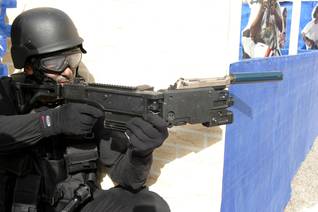
Israeli Special Forces (SF) have always had a reputation of efficiency and boldness. The knack for unconventional warfare is rooted in armed underground groups such as Palmach, the strike group of the Haganah, which fought the British occupying forces and Arab fighters in the years before independence (see The War of 1948-1949).
From independence in 1948 until the 1970s, the Israeli special forces were mostly modelled on the specialist units that existed in all modern armies, trained as long-range reconnaissance groups, as parachutists, combat swimmers or demolition teams.
Organized in dedicated units such as Sayeret Matkal, Sayeret T’zanhanim and Shayetet 13, these took part in raids against high value Egyptian and Syrian military targets in the 1960s and 1970s. For example, in 1969 a combined taskforce raided a heavily fortified island in the Red Sea used by the Egyptian army for electronic intelligence. The destruction of the facility caused a gap in the Egyptian radar coverage, as a result of which Israeli aircraft could attack targets further inland.


